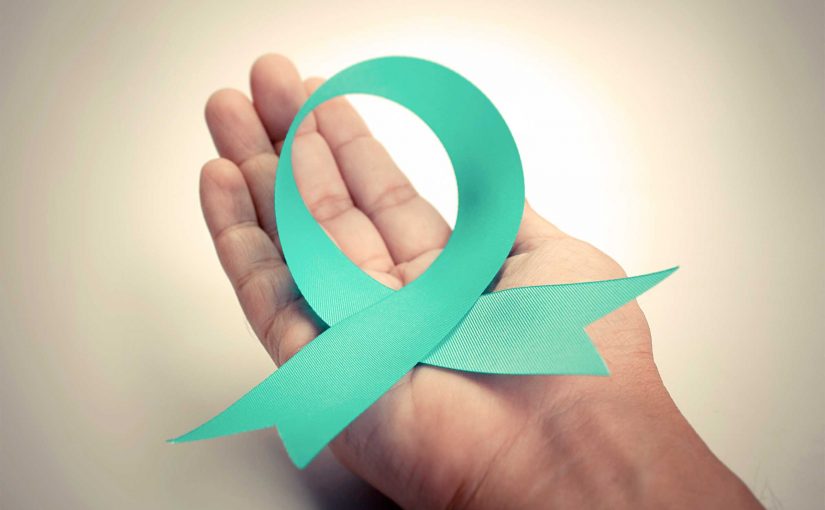By: Annette McElhiney
Now that it is December, most of us are preparing for the holidays. We plan and host parties, we prepare special foods, we give presents, and we create a “wish list” for ourselves. I’ve said many times that having been diagnosed with and treated for ovarian cancer in 2008 changed me in many ways. Material possessions now mean less and good experiences are the most valuable. I’m far more appreciative of the resilience of my body and mind and recognize the value of being an ovarian cancer advocate. But, this holiday season, I wish for…
1. Discovering a quick, inexpensive and definitive diagnostic test. Doctors have no definitive tools for diagnosing ovarian cancer, but rely on pelvic examination, CA 125 tests, a vaginal sonogram and a CT scan. In my case, neither my diagnostic doctor or gynecological surgeon could feel anything on a pelvic exam (even though I was diagnosed with IIIC high grade serous ovarian cancer). My presurgery CA 125 was only 44 (the normal is below 30). However, my vaginal sonogram showed a large shadow that was confirmed as cancer the next day by CT. My only symptom was two spots of post menopausal bleeding and, as a former nurse, I knew such was not normal. I also had Medicare and a private supplemental insurance policy so I knew my diagnostic tests would be covered. A quick, inexpensive, and definitive test for ovarian cancer is much needed because all women don’t have that.
2. Improving surgical techniques to insure complete debulking. Some progress has been made in doing laparoscopic surgery instead of a laparotomy. In addition, new methods of identifying malignant tissue during debulking surgery are being studied. In some cases, interval debulking is used where chemo is given prior to surgery, shrinks the tumor cells, and increases the chances for a complete debulking. I wish for additional tools enabling surgeons to remove all malignant tissue.
3. Refining molecular testing for front line therapy. When I had my surgery in 2008, molecular testing was relatively new; all patients received taxol and carboplatin. I requested adding Avastin to my initial treatment followed by a year of maintenance. Fortunately for me, when I had the tissue tested by the Clearity Foundation in 2010, their analysis showed Avastin was the best drug for my tumor’s molecular profile. Consequently, I’ve not recurred. So I wish for molecular testing first line so that an effective drug can be added sooner.
4. Improving targeted medicine. Despite the advantages of molecular profiling, not all doctors prescribe it or are guided by the results. Moreover, not all patients know about the process or how to go about seeking treatment. In some cases survivors can’t pay for the service but need to know that Clearity will help them.
5. Reducing the side effects of chemo therapy side effects. Although progress has been made in lessening nausea during treatment, much remains to be done about the profound fatigue and low blood count that many patients experience. “Icing the scalp” is now suggested to prevent hair loss, but it is expensive and not available to everyone. Neuropathy often accompanies chemo and for some survivors it never diminishes. Yet, there still aren’t medications that can alleviate it completely.
6. Preventing chemo resistance. Few patients are lucky enough not to recur, but for those who do recur repeatedly, the wall of resistance looms. Despite the research and proposed solutions, no full proof method of preventing resistance is available.
7. Alleviating PARP inhibitor side effect. PARP inhibitors delay recurrence in many recurring survivors and give additional months or even years of survival. Yet many women complain about gastrointestinal side effects and fatigue. If counter measures to both could be found, survivors quality of life would be much better.
8. Making Immunotherapy effective for more women. Even though immunotherapy has made progress thus far, it is still only effective for some. Perhaps with additional research, trials, and drug combinations, immunotherapy could work for more survivors. Researchers are addressing this problem.
9. Discovering a reliable blood test for follow up. Most survivors are followed with CA 125 checks and CT or PET scans that are expensive and not available to some for the lack of of equipment or money. Therefore a simple, quick, and inexpensive blood test is much needed. Again, researchers are trying.
10. Increasing funding for ovarian cancer research. Every item on my wish list will only be available if doctors and researchers are supported financially. Such support looks unlikely with the new tax bill, but hopefully the Department of Defense Ovarian Cancer Research Program will be allocated more funds and resources in 2018.
11. Finally, my ultimate wish is to find a CURE! Or, at least, a bonafide method for managing ovarian cancer. I hope 2018 will bring all of these wishes to fruition.
To read more of Annette’s posts in The Clearity Portal, click here to login.


